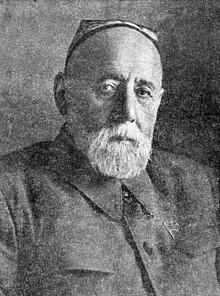Population
Since the fall of the Soviet Union, Tajiks have become the second largest ethnic group in Uzbekistan. [5] [6] Tajiks form the majority in the cities of Bukhara and Samarkand. [4] Additionally, 20.4% of the population of Tajiks in Uzbekistan reside in the Surxondaryo Region, and 19.9% of Tajiks live in the Samarqand Region. [7]
Number of Tajiks in Uzbekistan| Year | Number | Percent | Source |
|---|
| 1926 | 350,670 | 7.4% | [8] |
| 1939 | 317,560 | 5.1% | [9] |
| 1959 | 311,375 | 3.8% | [10] |
| 1970 | 457,356 | 3.8% | [11] |
| 1979 | 594,627 | 3.9% | [12] |
| 1989 | 933,560 | 4.7% | [5] |
| 2017 | 1,544,700 | 4.8% | [6] |
| 2021 | 1,657,336 | 4.8% | [13] |
The increase in the percentage of Tajiks from 3.9% in 1979 to 4.7% in 1989 can be partly attributed to a change in census instructions. The 1989 census allowed respondents to report their nationality based on ethnic self-identification rather than passport information for the first time. [7]
True Population & Uzbekisation
Due to assimilation pressures starting in 1924 with the establishment of the Uzbek SSR, many ethnic Tajiks identified themselves as Uzbeks in population censuses and preferred to be registered as Uzbek in their passports to avoid relocation to the less developed agricultural and mountainous regions of the Tajik SSR. [14] While official Uzbek statistics estimate the Tajik population in Uzbekistan to be around 5%, [15] [1] some experts believe that Tajiks may actually constitute 25% to 30% of the total population. [2] Consequently, the true number of Tajiks in modern Uzbekistan remains uncertain.
This page is based on this
Wikipedia article Text is available under the
CC BY-SA 4.0 license; additional terms may apply.
Images, videos and audio are available under their respective licenses.
